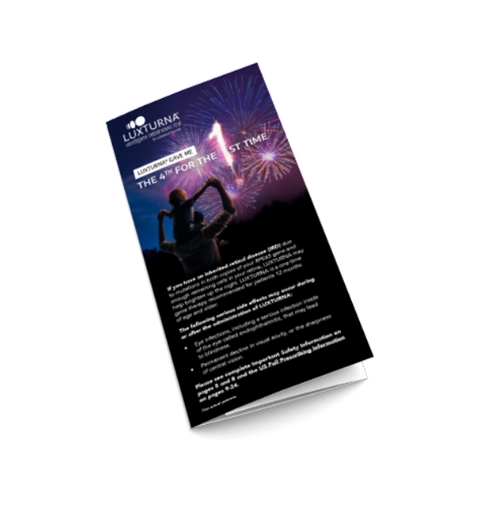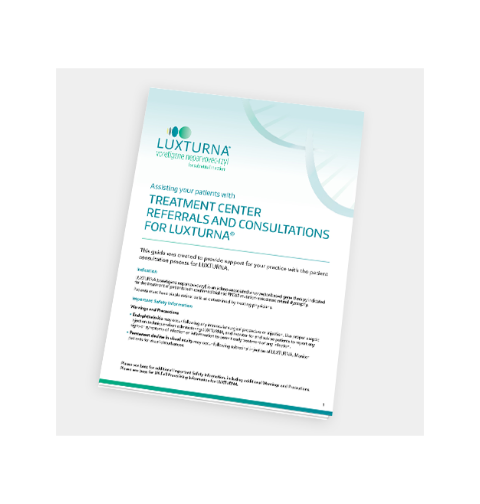
Brochure for Patients and Caregivers
Digital brochure to provide patients and caregivers information about LUXTURNA® as a potential treatment option.

Patient Profile Symptom Guide
Helps identify potential patients who have established RPE65-mediated IRDs, separate from RPs, LCAs and SECORDs, and also provides examples of clinical profiles that may be appropriate for genetic testing.

Referring Physician Guide
Find out about the patient consultation process for LUXTURNA and how it can help provide support for your practice.

Enrollment Form
Patients can use this form to enroll in Spark Therapeutics Generation Patient Services® and give Spark Therapeutics Generation Patient Services permission to look into their insurance and next steps for treatment.

Safety and Efficacy Guide
This brochure provides you with more detailed information about LUXTURNA’s efficacy and safety.

Setting Expectations Tool
Get tips for speaking with your patients who may be appropriate for LUXTURNA, including the importance of genetic testing, administration information, and how to get started.
